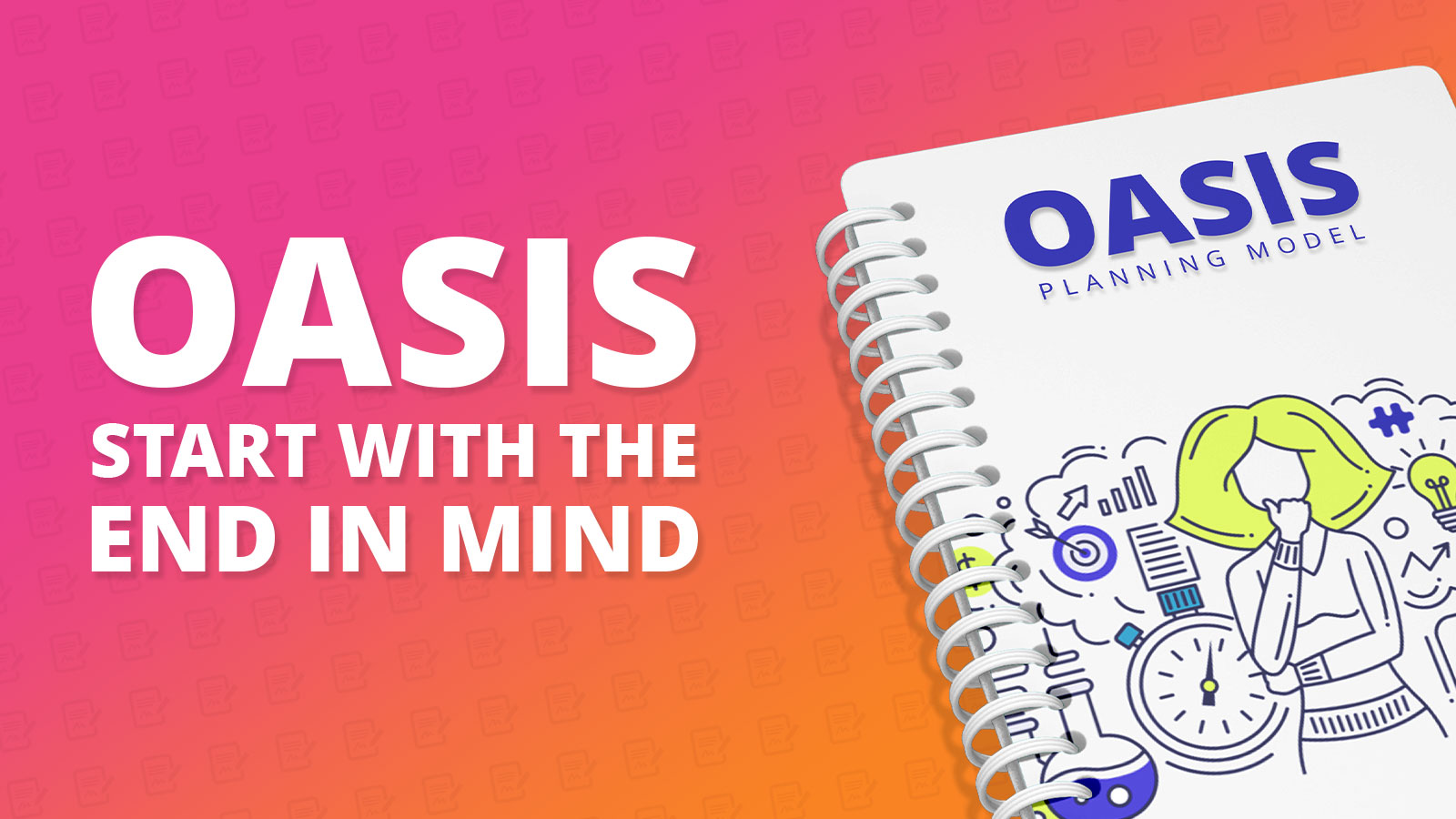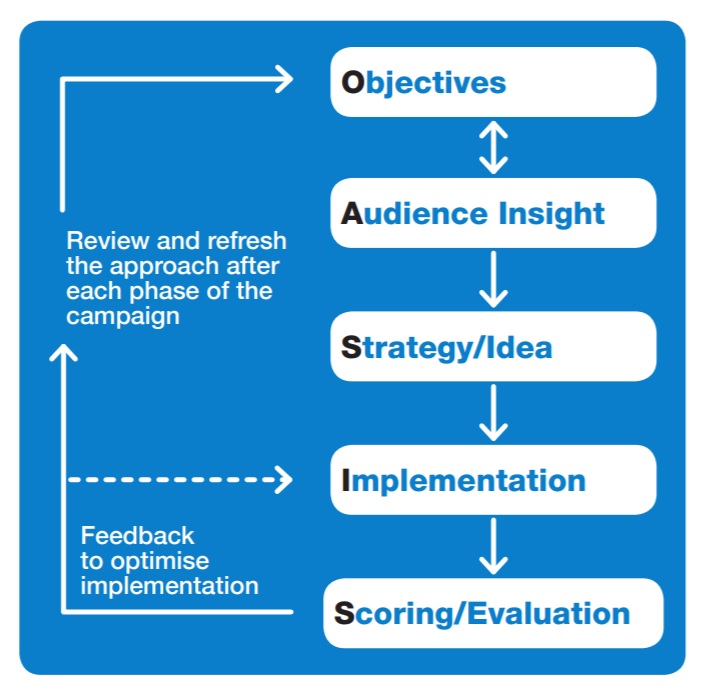Blog
CATEGORY: Public SectorBest practice
OASIS campaign planning: Start with the end in mind

In the ever-evolving landscape of local government communications, the need for strategic and effective campaign planning has never been more critical. Tailored to suit the unique challenges and opportunities faced by local government communications professionals, OASIS provides a comprehensive framework for planning and executing campaigns that resonate with the community.
What is The OASIS Framework?
The OASIS framework is a strategic tool designed to enhance the precision and effectiveness of campaign planning. It is structured around five key stages:
Objectives
Audience/Insight
Strategy/Ideas
Implementation
Scoring/Evaluation

Objective Setting: Clarifying the Mission
The success of any campaign lies in clear and well-defined objectives. The journey begins with a fundamental question: What is the mission of your campaign? In the context of local government communication, objectives often revolve around fostering community engagement, disseminating important information, or driving public participation in civic initiatives.
In the words of GCS, the CORE role of government communications:
C – Changing behaviours that benefit society
O – Operational effectiveness of public services
R – Reputation of the UK and responding in times of crises
E – Explanation of government policies and programmes
So, when setting objectives, you first need to set out what the communications activity is intending to achieve. Start with the policy aim and develop communications objectives that will deliver this.
These objectives should be Specific, Measurable, Achievable, Relevant, and Time-bound (SMART). By following the SMART approach, you lay the foundation for a well-structured and purpose-driven campaign.
Example Objective: Enhance community awareness and engagement in a recycling program to achieve a 20% increase in household recycling rates within the next six months.
Audience Insight: Knowing Your Community Inside Out
Understanding your audience is the linchpin of any successful communication strategy. For local government professionals, this means delving deep into the demographic, psychographic, and behavioural aspects of the community. Who is your campaign aimed at? What are their concerns, interests, and preferred communication channels? What are the barriers to change that your campaign can help to address?
Example Audience Profile: Residents aged 25-40, environmentally conscious, active on social media, and interested in sustainable living practices.
Note: Don’t forget to consider accessibility and inclusion during the planning phase. Here are some useful articles to help you
Strategy Formulation: Crafting a Purposeful Plan
With clear objectives and audience insights, the next step is to devise a strategy that aligns with the overarching mission. Local government communications often span various channels, including social media, newsletters, community events, and official websites. The strategy should detail how each channel will be used to convey the message effectively.
Example Strategy:
Social Media Campaign: Engage residents through informative and visually appealing posts about the benefits of recycling.
Community Workshops: Organise workshops in collaboration with local schools and community centres to educate residents about recycling practices.
Newsletter Outreach: Include a dedicated section in the monthly newsletter highlighting success stories and tips on sustainable living.
Implementation and Execution: Bringing the Plan to Life
Once the strategy is in place, it's time for action. Local government communications professionals must coordinate efforts across departments, ensuring a cohesive and synchronised execution. This involves content creation, event planning, and leveraging the selected communication channels to disseminate the message. Bring influencers and partners on board to increase impact and use low-cost approaches where possible; particularly PR and partnerships.
Implementation Steps:
Content Creation: Develop engaging and informative content tailored to each channel – from visually appealing social media graphics to in-depth articles for newsletters.
Event Planning: Coordinate logistics for community workshops, securing venues, speakers, and materials.
Channel Coordination: Schedule posts, newsletters, and community events strategically to maximise reach and impact.
Monitoring and Analysis: Navigating the Data Landscape
Monitoring is a continuous process that runs parallel to implementation. Monitoring involves tracking key performance indicators (KPIs) to evaluate the success of the campaign. Local government professionals can leverage analytics tools to gain insights into the effectiveness of each communication channel.
Key Metrics to Monitor:
Social Media Engagement: Track likes, shares, and comments to gauge community interest.
Event Participation: Measure attendance at community workshops to assess engagement levels.
Newsletter Metrics: Analyse open rates and click-through rates to understand the effectiveness of newsletter content.
Scoring and evaluation: How did it go?
You should monitor outputs, outtakes and outcomes throughout your campaign and evaluate them once it is complete.
Within OASIS, Objectives and Scoring are especially important for the purpose of evaluation.
Why OASIS Is Essential for Local Government Communications
Community-Centric Approach:
OASIS places the community at its heart by emphasising audience understanding. Local government professionals can tailor their campaigns to address specific community needs and concerns, fostering a sense of connection and responsiveness.
Strategic Resource Allocation:
With limited resources, local government communications professionals need a method that ensures efficient resource allocation. OASIS enables precise planning, allowing professionals to focus efforts where they are most likely to yield positive results.
Adaptability to Local Dynamics:
Local government landscapes are dynamic, with issues and priorities shifting over time. OASIS's iterative approach allows for real-time adjustments, ensuring that communication strategies remain relevant and impactful.
Data-Driven Decision Making:
OASIS promotes a culture of continuous improvement through data-driven insights. By monitoring and analysing campaign performance, local government professionals can make informed decisions, refining their strategies for future initiatives.
Embracing OASIS for Local Impact
In the realm of local government communications, OASIS emerges as a powerful ally in navigating the complexities of planning and executing impactful campaigns. By grounding campaigns in clear objectives, audience insights, strategic planning, seamless execution, and continuous analysis, local government professionals can elevate their communication efforts to new heights. As the OASIS method becomes a cornerstone in the toolkit of local communicators, it not only provides a roadmap for success but also ensures that the voice of local government resonates effectively with the hearts and minds of the community. Here's to leveraging the OASIS method for a brighter, more connected future in local government communications.
In summary;
Set clear and specific objectives, linking them with your organisation’s broader mission.
Deepen your understanding of your audience through robust research and data-driven insights.
Craft a compelling and narrative-driven strategy that aligns content with objectives and the audience journey.
Implement campaigns with planning, collaboration, and adaptability.
Embrace continuous learning and evaluation to refine and elevate your campaigns.
Solutions
Email marketing healthcheck
We are confident that we can help you, which is why we offer a free healthcheck to identify potential issues with your current programme and free advice on things that could be done to improve it.